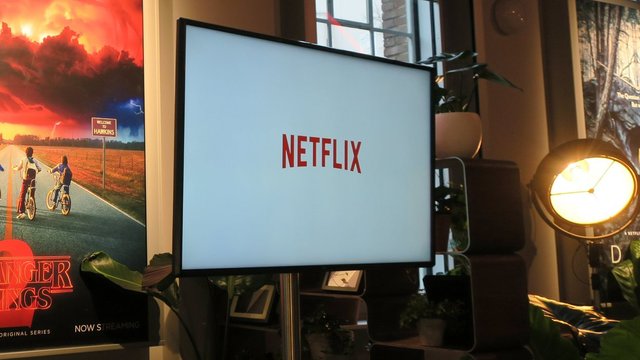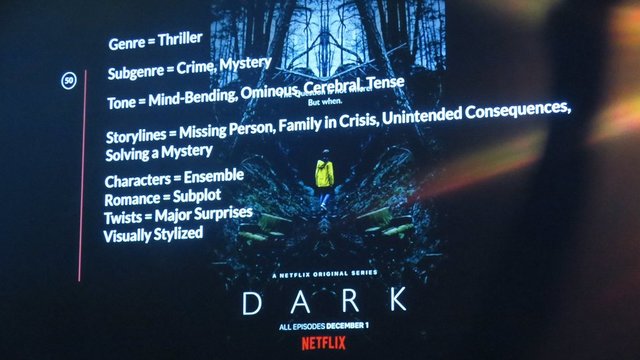How Netflix knows exactly what you want to look at
Both people and algorithms need to tell you something good to see in the weekend.

When you're after a hard work or school week slamming down on the couch for a solid round Netflix and potty, great suggestions for movies and comics are just a few keystrokes away.
For the popular streaming service, keep an eye on what you see, what you've seen and how much you've seen it, what you're giving up and what you seemingly do not mind. The longer you have been part of the "system", the better the service will get to know you.
But how do they use this information to find the right movies and series for you?
It is nearby to think that there is a heavy computer somewhere in the network that chew lots of data and sprays out a number of exciting categories that you think you're digging. It is true, but behind this again it is an extremely human aspect.
The human aspect - or the ghost in the machine, like Mike Hastings, Head of Netflix's Enhanced Content Team, likes to call it - is the gang behind the work of analyzing and categorizing all the content of the streaming service.
That means that someone actually has a job watching TV, and in this case there is a group of around thirty people whose enthusiasm for movies and TV shows is slightly above average.
This includes former professional specialists like television writers and critics, but also more normal enthusiasts and "movie lovers" of the type you could find behind the disk of your local video game.
This thread's task is to tag all the movies and series with appropriate keywords to describe such as genre, subjects, mood, action, personality and personality traits, as well as an overview of the use of such as violence and sex or anything that makes the content less suitable for younger audience.
The tags should be as analytical and objective as possible so that the tagging is not colored too much of personal taste.

An example of some of the keywords that may appear during tagging of content.
From there, the baton goes to the programmers and the computers who, with their ever-improved algorithms, take the job of finding series and movies to match your tastes - giving you a range of recommendations based on what you've already seen. Therefore, your Netflix homepage will be quite unique.
"The interesting thing about this tag project is that it is constantly evolving. No matter how our content changes or how people's tastes change, we found that this is a very flexible way to personalize the content, says Hastings.
Fifty thousand possible lines
Based on the key words the tags have noted for all content, Netflix's computers have extracted about fifty thousand possible "rows" of genres or categories that may appear on your front page.

Initially, these can be relatively uncomplicated lines containing "thrillers" or "romantic comedies", but as you review more of the content, the algorithms begin to look for possible keywords that go back to what you're looking at. Then it tries to find related content in both the same street and current page streets.

This can eventually cause you to get pretty specific categories on your front page.
Since tagging usually causes the content to have quite a few keywords associated with it, there are of course several ways or "ways" that different movies and series appear on your front page.
For example, the TV series "Arrow" may appear in someone who has the sense of superheroes, but also people with a general interest in action or special interest in Robin Hood.
It also means that Netflix does not always blink when they come with their recommendations, but they are getting better. And they have to.
Own content is a challenge
Greg Peters is Netflix's Chief Product Officer.
Greg Peters is Netflix's Chief Product Officer. Picture: Vegar Jansen, Tek.no
"We are still making more original content, and it has given us a challenge," said Greg Peters, Chief Product Officer at Netflix.
The thing is that it has been very common to use streaming services to watch movies and series people already know from TV or movie albums. Therefore, the descriptions on the Netflix front page have not been the focus - but rather to show the sample.
This naturally changes when there is more original content on Netflix, and it will be done in monn. The company pays as much as $ 8 billion, around $ 64 billion, on original content only in 2018.
Since this initiative is part of bringing the proportion of proprietary content up to 50 per cent by the end of 2018, it will increasingly appear new titles you will not have heard of before. Then the correct tagging and categorization becomes all the more important.
Netflix front page in "old days".
Netflix front page in "old days".
"That more and more content is unknown to our users, has also made us use more resources and space on the Netflix homepage to better present the current series or movie," Peters explains.
As an example of this, we could see Netflix's old front page towards the newer ones, where it is more of a place for the presentation of the content when looking for something to look at.
As of today, this appears in the form of static images, but a possible future solution called "previews" is also tested. This uses movie clips or live pictures instead.
Everything new is tested
With 109 million subscribers, it is understandable that Netflix does not easily address changes in the user interface. Therefore, all modifications go through a thorough A / B testing, which means that any sample - let's say a few hundred thousand users - get a new feature or a new interface.
A Netflix front page with the "previews" presentation offers live photos.
A Netflix front page with the "previews" presentation offers live photos.
Then, this group's use of Netflix is measured against an appropriate control group in the same market.
If the innovation causes users to see more series, movies or stays Netflix customers beyond the control group, then this will probably be rolled out to all users. If not, it is back to the design phase of the designers.
It was this kind of testing that also allowed Netflix to open up for more thorough search after their "secret categories" were revealed a couple of years ago.
"We never really tried to hide our subcategories. The reason we did not even make a giant list is that most people do not want a huge list of absolutely all categories. They want the content personalized for them, explains Hastings.
For those who do not remember: Netflix was open for search on titles and categories, but used only large collective categories like "action and adventure" - at least officially. But in reality, Netflix has around fifty thousand potential lines of keyword combinations to choose from.
This led to the news that you could find a number of interesting subcategories if you had the correct code.
Back at Mike Hastings we get an explanation of what happened afterwards.
"We saw that more and more searched for particular genres, so the A / B test if it would actually be a better experience for the users if we put all of these categories into the search. And the result is that you can now apply to all the fifty thousand categories - as long as they have content in them, he says.
Better with categories
Hastings can also tell that they have actually tested it to turn off the categories altogether. It was no big success.
The German TV series Dark is one of the talks in December.
The German TV series Dark is one of the talks in December. Picture: Vegar Jansen, Tek.no
"People look at the front without completely understanding it, they scan much more and spend more time deciding. Obviously, it becomes harder to choose, and we get less satisfied users.
Nor is he worried that the suggestions - which are mainly based on viewing history - lead to people ending in a kind of "bubble" where they only look more of the same and therefore miss new and exciting things that belong to other genres.
Nor is he worried that the suggestions - which are mainly based on viewing history - lead to people ending in a kind of "bubble" where they only look more of the same and therefore miss new and exciting things that belong to other genres.
It's fine with the tagging that descriptions like "mood" can cover quite a few genres. For example, take the "cerebral" category, which includes the series Dark and Sherlock. These are not so similar, but are both thought provoking.
So by recommending Dark, we may have a Sherlock fan to look at something different than the detective show. The hope is, at least, that tagging and categorization give people access to content they had otherwise not considered. I like to think that this keeps you out of such a bubble, "concludes Hastings.
good
Thank you! :)
Congratulations! This post has been upvoted from the communal account, @minnowsupport, by Jujanen from the Minnow Support Project. It's a witness project run by aggroed, ausbitbank, teamsteem, theprophet0, someguy123, neoxian, followbtcnews/crimsonclad, and netuoso. The goal is to help Steemit grow by supporting Minnows and creating a social network. Please find us in the Peace, Abundance, and Liberty Network (PALnet) Discord Channel. It's a completely public and open space to all members of the Steemit community who voluntarily choose to be there.
If you would like to delegate to the Minnow Support Project you can do so by clicking on the following links: 50SP, 100SP, 250SP, 500SP, 1000SP, 5000SP. Be sure to leave at least 50SP undelegated on your account.